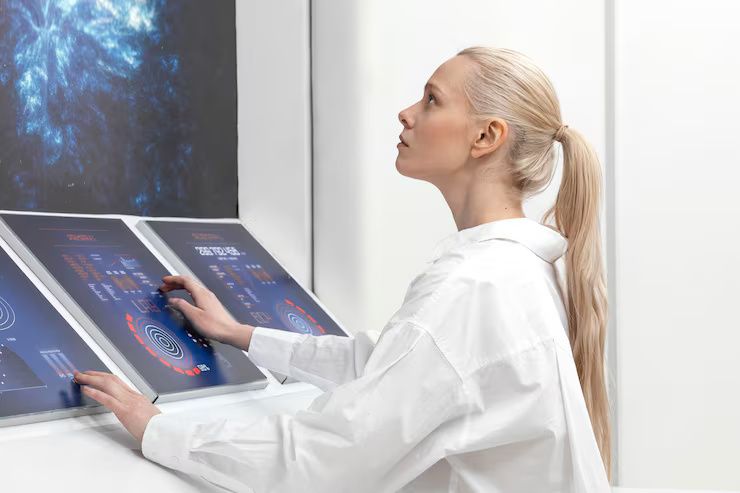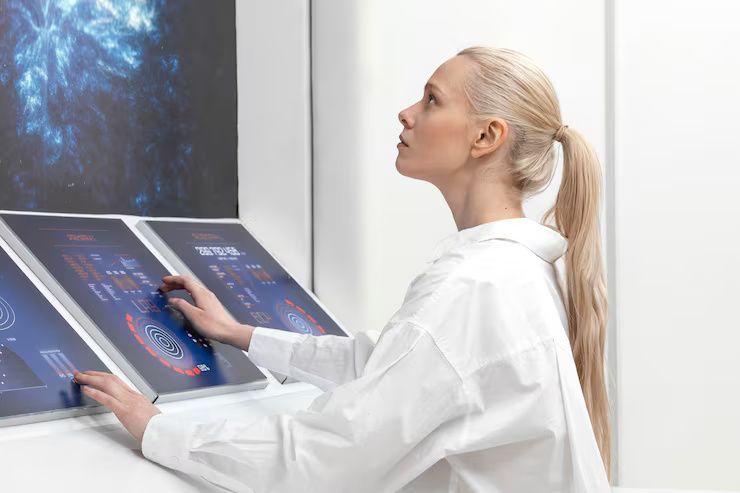Radiology AI tools are software systems that use artificial intelligence to assist radiologists in interpreting medical images such as X-rays, CT scans, and MRIs. These tools are trained on large datasets to recognize patterns, detect abnormalities, and prioritize urgent cases.
The purpose of these tools is not to replace radiologists but to support their work. As the volume of medical imaging continues to grow, radiologists are under pressure to analyze images quickly and accurately. AI helps streamline this process by offering faster analysis and flagging potential issues for closer review.
Radiology AI emerged from the need for efficiency, consistency, and reduced diagnostic errors in medical imaging. By using algorithms that learn from data, these tools can aid in detecting diseases like cancer, stroke, fractures, or lung conditions—often with a level of precision that complements human expertise.

Why AI in radiology matters today
The importance of AI in radiology is growing due to several factors:
-
Increased workload: Radiology departments face a high volume of imaging data, which can lead to delays in diagnosis.
-
Diagnostic accuracy: AI tools can help reduce human error by highlighting suspicious areas or comparing results with vast datasets.
-
Access to care: In underserved regions or during off-hours, AI can assist clinicians by providing immediate insights.
-
Speed: Early diagnosis often improves patient outcomes. AI helps reduce turnaround times for image analysis.
Who is affected?
-
Radiologists benefit from decision support and reduced workload.
-
Patients may receive faster and more accurate diagnoses.
-
Healthcare systems can improve efficiency and optimize resources.
Problems AI tools help solve:
-
Missed or delayed diagnoses
-
Overburdened radiology staff
-
Inequitable access to expert review
-
Inconsistent interpretations across practitioners
Recent trends and developments in radiology AI (2024–2025)
The field of radiology AI has seen notable advancements in the past year:
| Trend | Description |
|---|---|
| FDA approvals | In 2024, the U.S. FDA approved several new AI algorithms for chest X-rays, brain MRIs, and breast cancer screening. |
| Integration with PACS | Picture Archiving and Communication Systems (PACS) are increasingly integrating AI to provide real-time support during image reviews. |
| Multimodal AI models | Tools that combine imaging with clinical data (like lab results or patient history) for more accurate diagnostics are becoming common. |
| Large-scale AI trials | Studies in the U.S., Europe, and Asia are testing AI’s performance in real clinical settings, aiming for wider adoption. |
| Generative AI in imaging | AI can now generate simulated scans to assist with training or compare against actual scans for anomaly detection. |
In February 2025, a multi-center study published in Radiology journal showed that AI-assisted chest X-ray interpretation reduced missed pneumonia diagnoses by 35%. Similarly, NHS England expanded its AI radiology program in May 2025, incorporating tools for early lung cancer detection.
Laws, policies, and regulations affecting radiology AI
AI in healthcare is subject to strict regulation to ensure patient safety, privacy, and ethical use. Different regions follow different frameworks:
| Regulation / Policy | Region | Key Focus |
|---|---|---|
| FDA 510(k) Clearance | USA | AI medical devices must prove safety and effectiveness before market release. |
| EU MDR (Medical Device Regulation) | Europe | Requires rigorous clinical evaluation for AI tools used in diagnosis. |
| HIPAA (Health Insurance Portability and Accountability Act) | USA | Protects patient data used by AI systems. |
| UK AI Regulation Framework | UK | Guides ethical deployment and transparency in AI tools used in the NHS. |
| Data Protection Laws (GDPR, etc.) | Global | Ensure patient data used in AI training is anonymized and handled lawfully. |
Some countries, such as South Korea and Canada, have launched AI sandbox environments, allowing developers to test AI tools in real-world settings under government oversight.
Useful tools, platforms, and resources for radiology AI
Here are some notable tools and services that support the use and development of AI in radiology:
AI Software for Clinical Use:
-
Aidoc: Prioritizes and detects critical conditions like brain bleeds or pulmonary embolisms.
-
Zebra Medical Vision: Offers tools for detecting osteoporosis, fatty liver, and cardiovascular issues.
-
Lunit INSIGHT: Detects abnormalities in chest X-rays and mammograms.
-
Qure.ai: AI algorithms for TB screening, brain CT scans, and chest X-rays.
Academic and Open Access Platforms:
-
The Cancer Imaging Archive (TCIA): Public datasets for training and testing radiology AI.
-
NIH DeepLesion Dataset: Annotated CT scans for AI research.
-
OpenRadAI: Community project offering tools and educational materials on AI in radiology.
Training and Guidelines:
-
RSNA AI Resources: Radiological Society of North America offers webinars, guidelines, and a registry of FDA-approved AI tools.
-
ECR AI Pathway: European Congress of Radiology offers dedicated tracks and certifications on AI literacy in clinical imaging.
Templates and Planning Tools:
-
Workflow checklists for integrating AI tools
-
Data annotation guidelines for training custom models
-
Risk assessment templates for clinical trials using AI
Frequently Asked Questions
1. Can AI replace radiologists?
No. AI is designed to support, not replace, radiologists. While it can perform tasks like detecting abnormalities, final diagnosis and patient care decisions still rely on human professionals.
2. Is AI in radiology safe to use?
AI tools used in clinical settings must go through regulatory approval processes (e.g., FDA in the U.S.). These systems are tested for safety, reliability, and accuracy before they are deployed.
3. How does AI improve radiology efficiency?
AI can prioritize urgent cases, reduce false negatives, and assist in repetitive tasks like measurements or labeling, allowing radiologists to focus on more complex cases.
4. What types of scans can AI analyze?
AI can analyze various types of medical images, including:
-
Chest X-rays
-
CT and MRI scans of the brain, chest, and abdomen
-
Mammograms
-
Bone scans for fractures and osteoporosis
5. How is patient data protected in AI systems?
AI tools must comply with data protection laws such as HIPAA (USA) or GDPR (EU). This includes using de-identified data for training and ensuring secure data handling protocols.
Summary Table: Comparing Types of Radiology AI Tools
| AI Tool Type | Focus Area | Typical Use |
|---|---|---|
| Detection AI | Identifies signs of disease | Spotting lung nodules or brain bleeds |
| Triage AI | Prioritizes urgent scans | Flagging life-threatening conditions |
| Quantitative AI | Measures and tracks lesions | Tumor size tracking over time |
| Predictive AI | Forecasts disease progression | Risk modeling based on imaging + patient data |
| Training AI | Assists in education | Simulated scans and diagnostics for students |
Final thoughts
Radiology AI tools are reshaping the landscape of medical imaging. With their ability to detect patterns, reduce delays, and assist clinical teams, these technologies offer a valuable layer of support in healthcare systems worldwide.
While not a replacement for human judgment, AI enhances accuracy, speed, and consistency in radiology. Staying informed about the latest developments, regulations, and tools can help both professionals and patients understand how AI is responsibly used to improve health outcomes.

